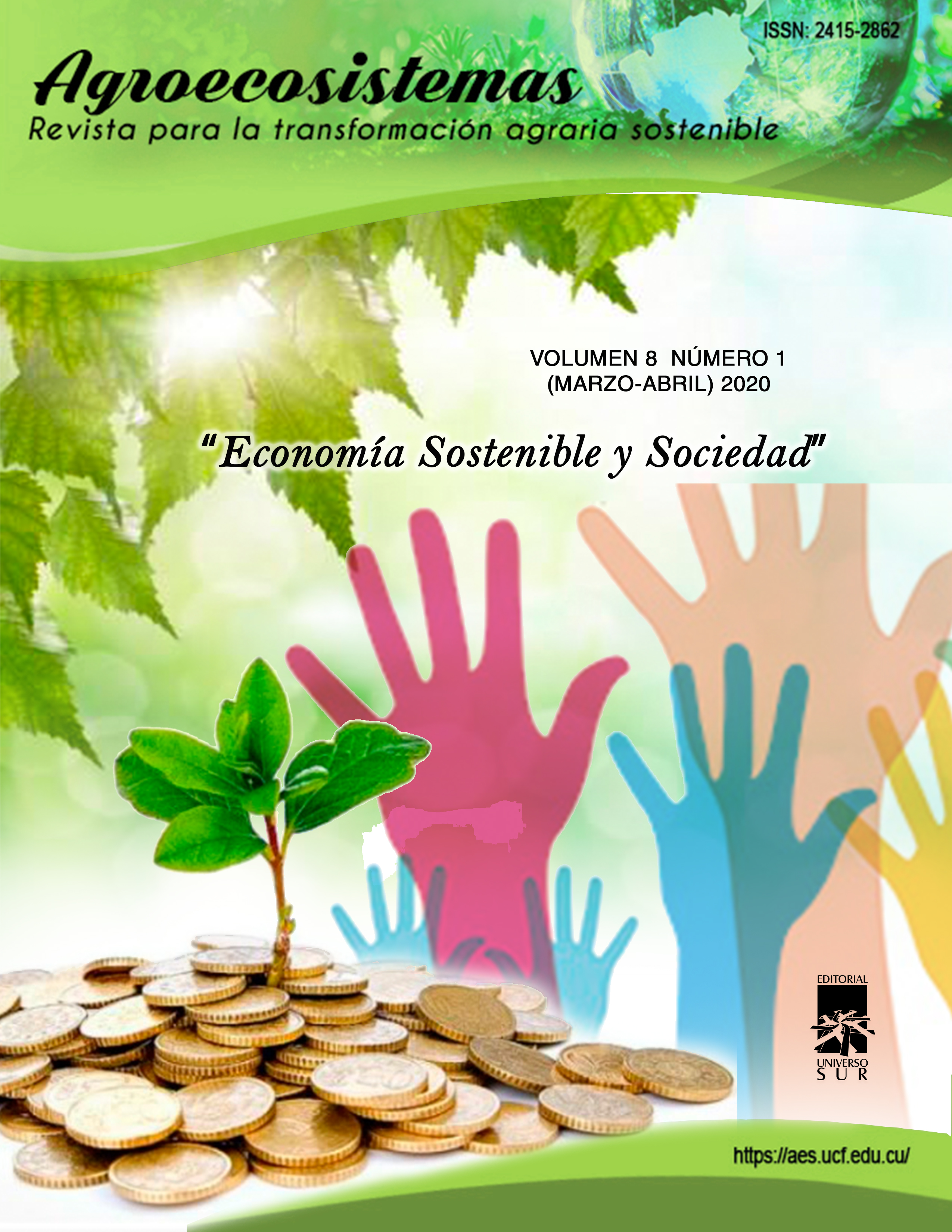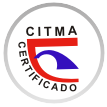Efecto alelopático de un extracto acuoso de Panicum Maximum Jacq. sobre dos dicotiledóneas
Resumen
La investigación tuvo como objetivo evaluar el efecto alelopático de un extracto acuoso de Panicum maximum Jacq. sobre dos arvenses dicotiledóneas Amaranthus dubius Mart. y Euphorbia heterophylla L. en pre y post emergencia. Se desarrollaron cuatro ensayos, dos por especie de arvense desde febrero 2015 hasta agosto de 2016 en el Laboratorio Provincial de Sanidad Vegetal Cienfuegos. Para la obtención del extracto acuoso de rizomas de Panicum maximum se tomaron plantas en la fase de floración - fructificación con tres meses de edad. Se evaluaron cuatro tratamientos por ensayo con un extracto obtenido en una proporción 1:10 de rizomas agua (p/v) (tres concentraciones del extracto 30, 20 y 10% y un testigo). Los ensayos se dispusieron en un diseño completamente aleatorizado 4x5. Las unidades experimentales estuvieron constituidas por magentas donde se ubicaron semillas de las arvenses. A los 12 días se evaluó el porcentaje de germinación, la longitud de la radícula y del hipocótilo. Se realizaron los análisis de varianza, medias se compararon con la prueba de Tukey P?0,05. Se usó el paquete SPSS para Windows versión 15. El extracto acuoso de Panicum maximum manifestó efecto alelopático negativo en pre emergencia sobre la germinación y se produjo una estimulación de la longitud del hipocótilo, mientras que en post emergencia disminuyó el porcentaje de germinación y la longitud contra Euphorbia heterophylla, mientras que contra Amaranthus dubius redujo la germinación tanto en pre como en post emergencia, y hubo reducción de la longitud de la radícula y del hipocótilo en pre emergencia.
Palabras clave:
Alelopatía, fitotoxicidad, arvenses, germinación.
ABSTRACT
The objective of this research was to evaluate the allelopathic effect of an aqueous extract of Panicum maximum Jacq. on two dicotyledonous, Amaranthus dubius Mart. and Euphorbia heterophylla L. in pre and post emergence. Four trials were carried out, two with each species from February 2015 to August 2016 at the Cienfuegos Provincial Plant Health Laboratory (LPSV). To obtain the aqueous extract of rhizomes of Panicum maximum, the plants were harvested in the flowering - fruiting phase at three months of age. Four treatments were evaluated by assay with an extract obtained in a 1:10 proportion of water (w / v) rhizomes (three concentrations of extract 30, 20 and 10% and 1 control). The trials were arranged in a completely randomized 4x5 design (four treatments and five replicates). The experimental units were constituted by magentas where seeds of the weeds were located. At 12 day, the percentage of germination, the length of the radicle and the hypocotyl were evaluated. With this information, the analysis of variance was performed. The means were compared with the Tukey test P?0.05. The SPSS package for Windows version 15 was used. The aqueous extract of Panicum maximum showed negative allelopathic effect in pre emergence on the germination and a stimulation of the length of the hypocotyl, whereas in post emergence the percentage of germination and length against Euphorbia heterophylla decreased against Amaranthus dubius reduced germination in both pre and post emergence and there was reduction of radicle and hypocotyl length in pre emergence.Keywords:
Allelopathy, phytotoxicity, weeds, germination.Descargas
Publicado
Cómo citar
Número
Sección
Licencia
La editorial "Universo Sur", de la Universidad de Cienfuegos, publica el contenido de la Revista Científica Agroecosistemas bajo una Licencia Creative Commons Atribución-NoComercial-SinDerivar 4.0 Internacional.
© Podrá reproducirse, de forma parcial o total, el contenido de esta publicación, siempre que se haga de forma literal y se mencione la fuente.






